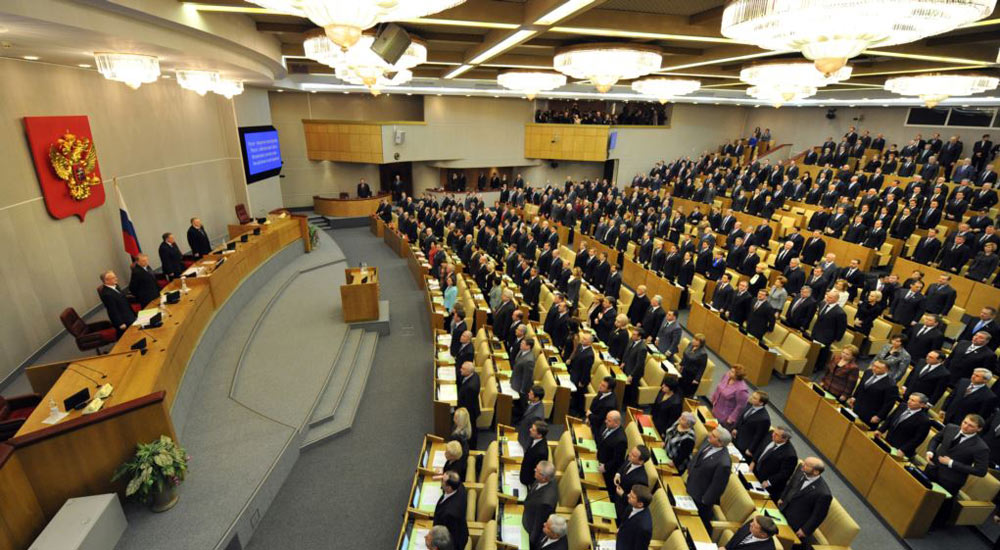State Duma will limit crowdfunding

Until recently, crowdfunding remained the sphere that the Russian state controlled very weakly. Soon everything will change: the State Duma is going to ban Russians from investing more than 600,000 rubles in crowdfunding projects for the year.
The bill was introduced back in March of this year by a group of deputies from the factions of United Russia, Fair Russia and one representative of the Liberal Democratic Party, as well as two senators from the same United Russia party who joined them. The published text of the law does not mention a specific restriction, but states that the Bank of Russia will set a limit on investments.

The document passed the first reading. Now the second version is being prepared for the second reading. According to RBC, it follows from it that individuals who do not have the status of a qualified investor will not be able to invest more than 600,000 rubles a year in crowdfunding and more than 100,000 rubles in one project.
To become a qualified investor, individuals must meet one of the following requirements:
- own assets or property worth at least 6 million rubles;
- have experience in an organization from the field of securities or TFI - 2 years in an organization with the status of a qualified investor and 3 years without such status;
- for the year to make transactions with securities with a frequency of at least ten in a quarter, and at least one per month with a turnover of 6 million rubles;
- have a higher economic education or a special financial certificate.
Crowdfunding allows you to finance the project, massively attracting funds from individuals and legal entities. Money is collected through the Internet on a platform that interacts between backers (investors) and recipients. The goal can be anything: charity, support for the media and political campaigns, financing small businesses. Crowdfunding refers to the spectrum of crowd-based technologies, each branch of which attracts a wide range of people and means to accomplish one goal.

Although the practice of fundraising has always existed, the first use of crowdfunding in a more or less modern form dates back to 1997. Then the fans of the British prog-rock band Marillion jointly financed the American musical tour of their idols. A lot of crowdfunding platforms for musicians appeared in the “nil”, the creators of films began to resort to crowdfunding. The tool fell to the taste of technology startups, which is obvious from the rise of the Kickstarter and Indiegogo platforms.
In exchange for participation, investors receive a share in the authorized capital, or funds are drawn up as a loan. Remuneration is non-financial. For example, music project backers are sent exclusive posters, autographed t-shirts, and film donators are invited to shoot. When financing the production of gadgets, design objects, toys and other things, the backer is likely to receive a copy of the product. Because of this, some treat Kickstarter-like platforms as a “couch shop”, but this is not the same. Often projects do not turn into a finished product (RIP, Lily quadrocopter).

Lily quadcopter is a dream that never came true
Recall that the story Madrobots began with the sale of gadgets with Kickstarter and Indiegogo. In 2015, our online store launched Zavtra leather wallets on Boomstarter. In 2016, the same Bivan inflatable sofa was “born”, becoming the champion of the collection platform (~ 4 million rubles). Without crowdfunding, our store can not be imagined.

Our Bivans exist due to crowdfunding.
In Russia, reward-crowdfunding is just the tip of the iceberg. According to the Central Bank, in 2017 in Russia only 2.5 thousand projects were financed in the amount of 163 million rubles, with a total market volume of 11.2 billion rubles. Of these, 9.3 billion rubles is B2B, that is, loans that one company issues to another.
The restriction will be really painful for the crypto industry. ICO-projects are often created in the form of crowdfunding, and a private investor, according to the Russian Association of Cryptoindustry and Blockchain, invests in them 1-3 million rubles a year. For comparison, the size of one donation to the project at Boomstarter fluctuated around 1–1.5 thousand rubles.
Representatives of the Central Bank say they shield inexperienced investors about unnecessary risks and losses. It is noteworthy that in June, Prime Minister Dmitry Medvedev at the HSE conference mildly opposed the control of crowdfunding. He said that when the state tries to regulate something, it “usually goes awry.”
The updated version of the document will pass the second reading in the lower house of parliament in January 2019. Use crowdfunding until banned.


